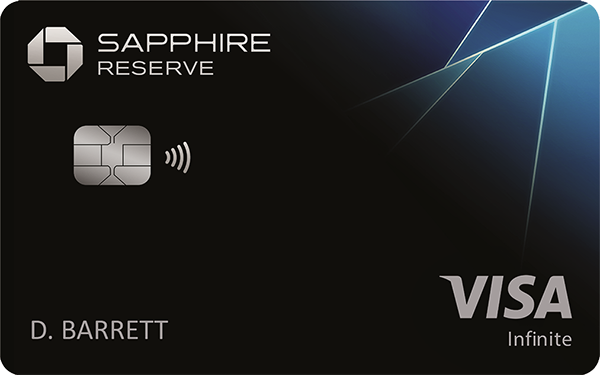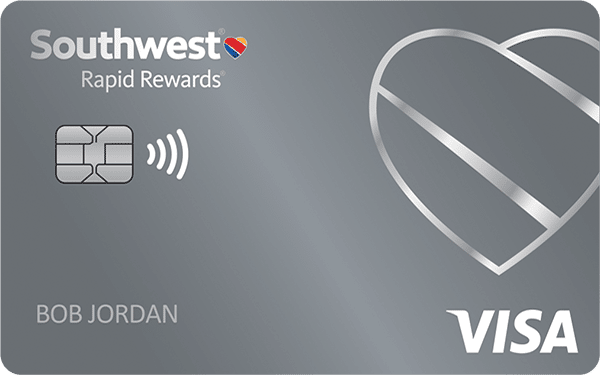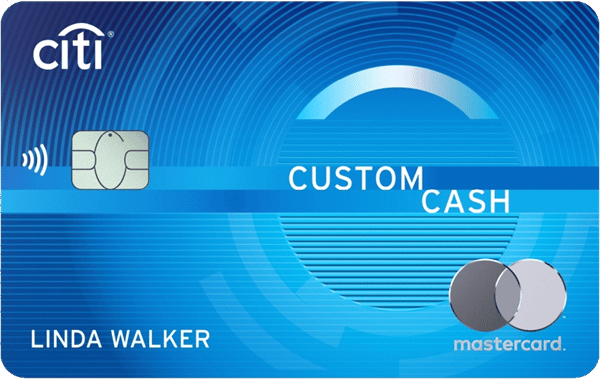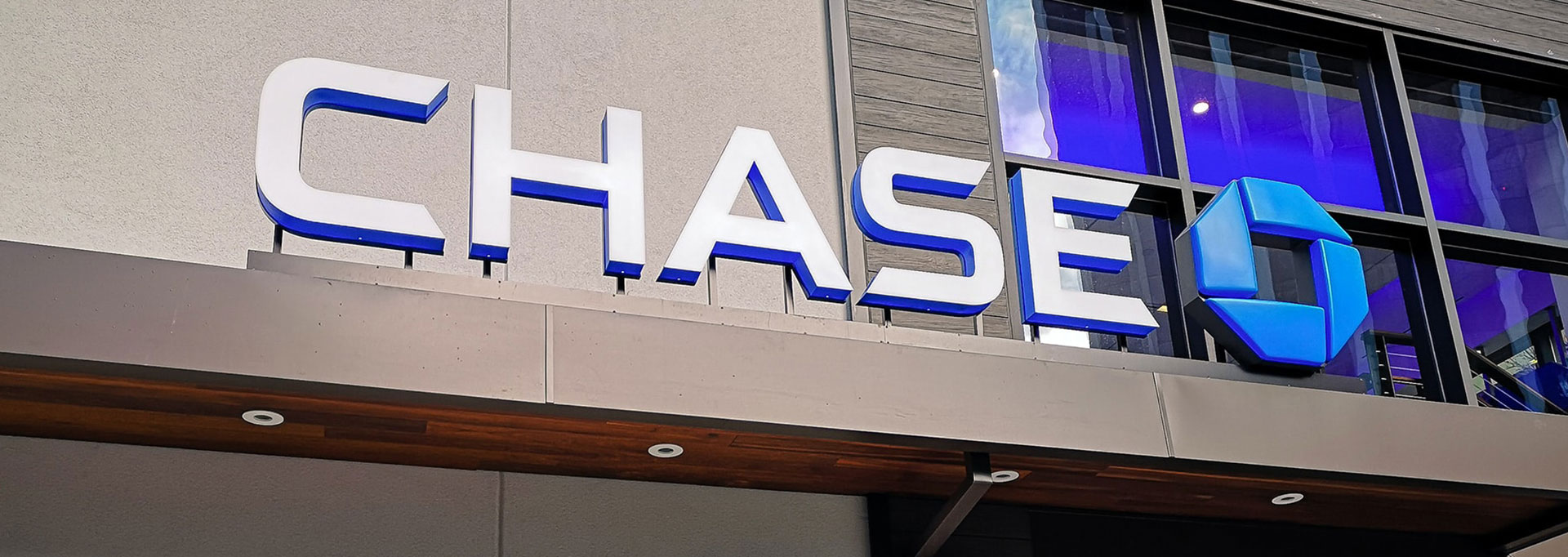Most products on this page are from partners who may compensate us. This may influence which products we write about and where and how they appear on the page. However, opinions expressed here are the author's alone, not those of any bank, credit card issuer, airline or hotel chain.
The Chase Sapphire Reserve® launched in 2016 and quickly became one of the top travel credit cards you could have in your wallet. At the time, I was a credit cards writer at a fintech company and covered the card’s inaugural 100,000-point sign-up bonus, its luxury benefits and easy-to-use travel credit that made it much less expensive than it looked.
But there was one big problem: I couldn’t apply for it. A year earlier, Chase had begun declining applications for its flagship cards if the applicant had opened five or more new credit card accounts in the previous 24 months. I’ve always thought this unofficial 5/24 rule has been fair as it stops serial credit card “churners” from opening accounts just to get the bonus and then canceling them. But because I’ve opened many cards over the years, I wasn't eligible to apply for the Sapphire Reserve until 2022. Here’s why it was worth the wait.
Chase Sapphire Reserve®
- Our Rating 4.5/5 How our ratings work
- APR22.49% - 29.49% (Variable)
- Annual Fee$550
-
Sign-Up Bonus
60,000Chase Ultimate Rewards Points
Earn 60,000 bonus points after you spend $4,000 on purchases in the first 3 months from account opening. That's $900 toward travel when you redeem through Chase Travel℠. Dollar Equivalent: $1,380 (60,000 Chase Ultimate Rewards Points * 0.023 base)
This card features an annual credit for travel purchases, which can offset the annual fee, plus bonus points when you sign up. You'll also get free access to tons of Priority Pass lounges and restaurant options around the world, along with access to the Chase Sapphire Lounge network.
Overview
If you’re looking to elevate your travel experience, look no further than the Chase Sapphire Reserve. When you first get approved, you’ll earn a generous sign-up bonus that can be used for travel-related spending booked through Chase Travel℠. Transfer the points to one of Chase’s airline or hotel partners and they’re potentially worth even more.
Pros
- An array of premium travel perks including access to Priority Pass lounges
- Easy-to-use $300 travel credit that helps offset card's annual fee
- Generous rewards rates for spending
Cons
- High annual fee may be a deterrent for some
- Perks are starting to get stale relative to newer competition
The Chase Sapphire Reserve Is Affordable for a Premium Credit Card
Like other premium travel cards, the Chase Sapphire Reserve charges a steep annual fee. But what sets the card apart from similar cards, such as the Platinum Card® from American Express, is the $300 annual travel credit. That said, Amex also offers travel-related credits on its premium card, but they can be difficult to use unless you have the right travel habits. Enrollment is required for select benefits and terms apply.
In contrast, the Sapphire Reserve’s travel credit works on just about any travel-related expense. Even casual travelers will find it easy to max out the benefit every year. If spending at least $300 per year on travel is something you do anyway, that cuts the effective yearly cost of the card to $250.
The Rewards Program Is Unparalleled
Few points and miles experts would place another rewards program ahead of Chase Ultimate Rewards in terms of flexibility and value. Chase isn’t the only bank that has transfer partners, and it doesn’t even have the most.
But with premium cards from some other issuers, you have to transfer your points to a partner airline or hotel brand to have any hopes of getting more than 1 cent per point in value. In contrast, the Sapphire Reserve offers an impressive 1.5 cents per point if you use them to book travel through Chase.
 Related Article
Related Article
Chase Travel Rewards: Guide to Chase Ultimate Rewards
Now, you can get more than that with certain transfer partners and the right itinerary. But this typically requires a lot of research, and if you don’t have the time, savvy or desire for that, the Sapphire Reserve still makes maximizing your points easy.
What’s more, if you have other cards that earn Ultimate Rewards, you can transfer points earned with those cards to your Reserve account. For example, I have the Chase Freedom FlexSM, which gives me 5 points per dollar on rotating categories and travel booked through Chase. If I transfer those points to my Reserve account and use them to book travel, the effective rate is 7.5%, which you’ll be hard-pressed to find elsewhere.
Recommended Travel Credit Cards
| Credit Card | Intro Bonus | Annual Fee | Rewards Rate | Learn More |
|---|---|---|---|---|
|
|
60,000Chase Ultimate Rewards Points
Earn 60,000 bonus points after you spend $4,000 on purchases in the first 3 months from account opening. That's $750 when you redeem through Chase Travel℠. Dollar Equivalent: $1,380 (60,000 Chase Ultimate Rewards Points * 0.023 base) |
$95 |
1x- 5xPoints
Enjoy benefits such as 5x on travel purchased through Chase Travel℠, 3x on dining, select streaming services and online groceries, 2x on all other travel purchases, 1x on all other purchases, $50 Annual Chase Travel Hotel Credit, plus more. |
Apply Now |
|
|
50,000Southwest Rapid Rewards Points
Earn 50,000 bonus points after spending $1,000 on purchases in the first 3 months from account opening. Dollar Equivalent: $700 (50,000 Southwest Rapid Rewards Points * 0.014 base) |
$69 |
1x - 2xPoints
Earn 2X points on Southwest® purchases. Earn 2X points on Rapid Rewards® hotel and car rental partners. Earn 2X points on local transit and commuting, including rideshare. Earn 2X points on internet, cable, and phone services; select streaming. Earn 1X points on all other purchases. |
Apply Now |
|
|
$200Cash Bonus
Earn $200 in cash back after you spend $1500 on purchases in the first 6 months of account opening. This bonus offer will be fulfilled as 20,000 ThankYou® points, which can be redeemed for $200 cash back. |
$0 |
1% - 5%Cashback
Earn 5% cash back on purchases in your top eligible spend category each billing cycle, up to the first $500 spent, 1% cash back thereafter. Also, earn unlimited 1% cash back on all other purchases. Special Travel Offer: Earn an additional 4% cash back on hotels, car rentals, and attractions booked on Citi Travel℠ portal through 6/30/2025. |
Apply Now Rates & Fees |
|
|
70,000Citi ThankYou® Points
Earn 70,000 bonus ThankYou® Points after spending $4,000 in the first 3 months of account opening, redeemable for $700 in gift cards or travel rewards at thankyou.com. Dollar Equivalent: $1,260 (70,000 Citi ThankYou® Points * 0.018 base) |
$95 |
1X-10XPoints
10x on Hotels, Car Rentals, and Attractions booked through CitiTravel.com 3x -- Earn 3 Points per $1 spent on Air Travel and Other Hotel Purchases 3x -- Earn 3 Points per $1 spent on Restaurants 3x -- Earn 3 Points per $1 spent on Supermarkets 3x -- Earn 3 Points per $1 spent on Gas and EV Charging Stations 1x -- Earn 1 Point per $1 spent on All Other Purchases |
Apply Now Rates & Fees |
The Perks Make It the Perfect Travel Companion
When it comes to airport lounge access, my favorite card is the Platinum Card from American Express. In addition to the Priority Pass lounge network, you’ll also gain access to The Centurion Lounge, Delta Sky Club, Escape lounges and more. Enrollment is required for select benefits and terms apply.
But Sapphire Reserve cardholders get a restaurant benefit through Priority Pass. At select airports, cardholders can get a credit—often $28—for themselves and one guest at designated restaurants. That’s up to $56 in free food, which can provide a better value than some airport lounges.
The card’s trip protection benefits also make buying supplemental travel insurance almost unnecessary. For starters, the rental car insurance is primary, which means you don’t need to file a claim with your personal insurance company first—most cards offer secondary coverage, which may just cover your personal policy’s deductible.
There’s also just the sheer volume of travel insurance benefits, including:
- Trip cancellation and interruption insurance
- Trip delay reimbursement
- Baggage delay insurance
- Lost luggage reimbursement
- Travel accident insurance
- Emergency evacuation and transportation
- Emergency medical and dental benefit
- Roadside assistance
- Travel and emergency assistance
While other premium travel cards come close, I’m not aware of any other card that offers all of these.
 Related Article
Related Article
15 Years Later, Here’s Why the Chase Sapphire Preferred Is Still the Best Travel Card for Beginners
Bottom Line
The Chase Sapphire Reserve is hard to beat if you’re a frequent traveler, and it could even be worth considering for casual travelers who can use the perks enough to make up for the annual fee. And while I don’t think the card’s rewards rates are the best—3 points on travel and dining and 1 point on everything else—the redemption value and flexibility still make it worth my while.
Ready to Apply? Start Here






















